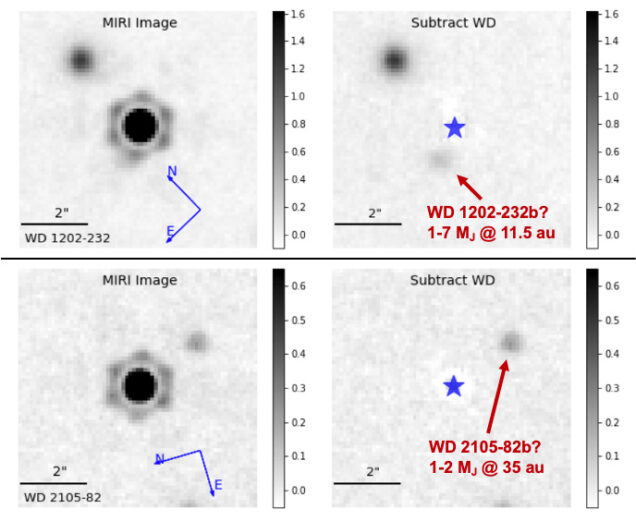JWST directly images two giant planet candidates

In January 2024, a manuscript led by Susan Mullally from Space Telescope Science Institute and including members of the BUWD group (Mullally et al. 2024) announced that JWST has directly images giant planet candidates around two metal-polluted white dwarf stars. The two planet candidates (JWST/MIRI images shown above) are consistent with 1-7 Jupiter-mass planets on orbits that would have been similar to Jupiter or Saturn in our solar system before the host star lost mass to become a white dwarf. JWST has improved our sensitivity to such planets by an order of magnitude. If confirmed to move with the white dwarf (although unlikely, in each case the point source could be a background galaxy), these would be the oldest directly imaged exoplanets ever found, and would be direct evidence that giant planets like Jupiter survive the evolution of their host star. Because they orbit white dwarf stars, we can get reasonable estimates on their ages: WD1202-232b is likely close in age to our Sun (~5 billion years old), and WD2105−82b is between 1.4-2.4 Gyr. Some nice press coverage of the discovery was published by Science Magazine as well as Universe Today. The manuscript has been accepted in The Astrophysical Journal Letters.